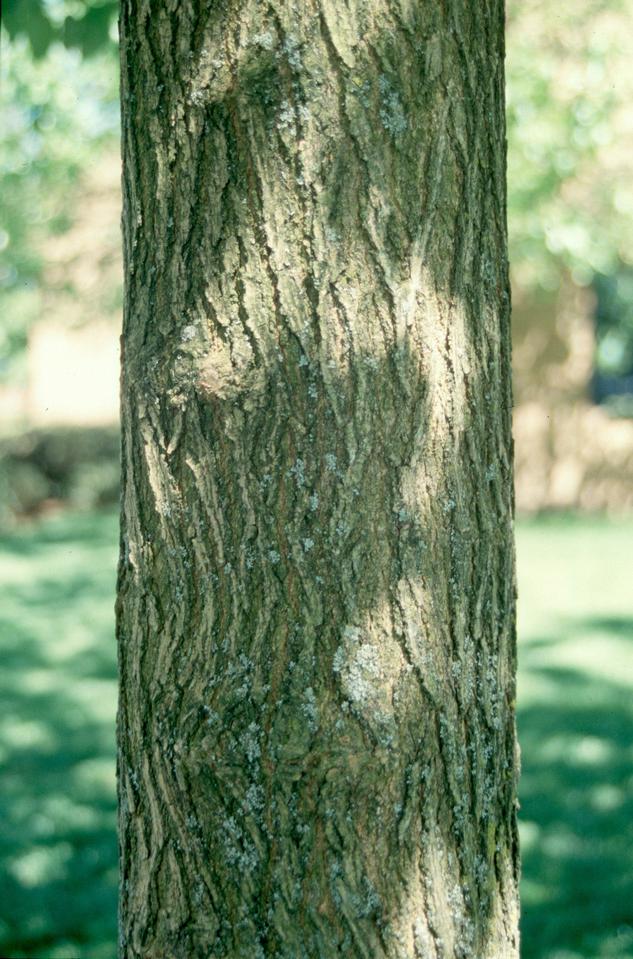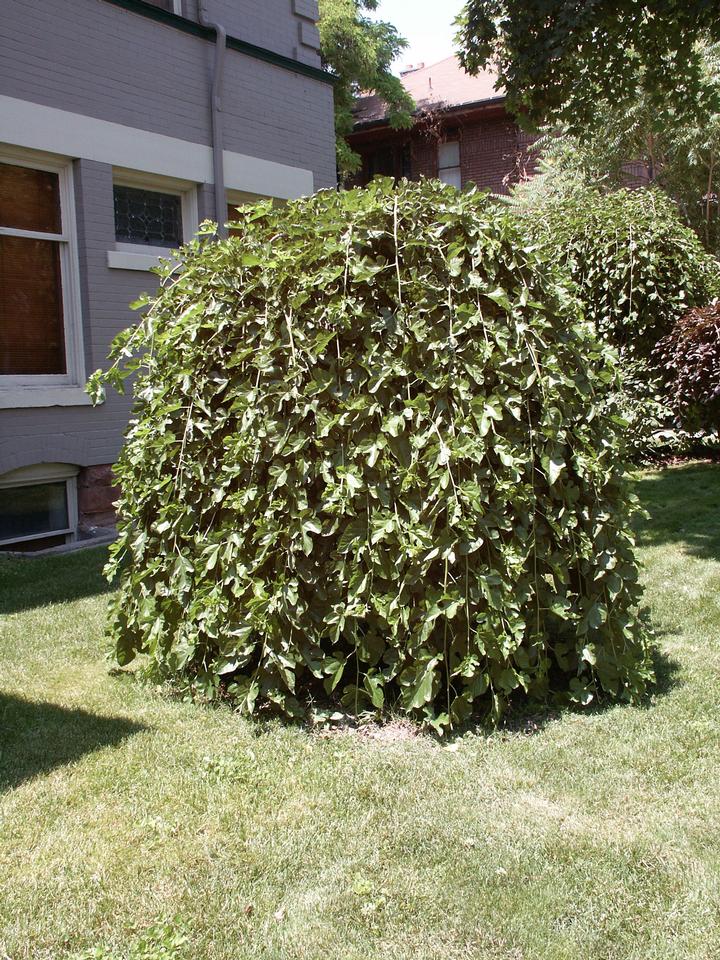Mulberry, White
Morus alba
Moraceae - Mulberry
Description
Leaves: Dark green, glossy, and normally hairless on top; hairless below; simple; alternate; several forms, from undivided to lobed; toothed; egg shaped, from 2" to 7" in length and up to 6" in width; tapering to point; often curling up; deciduous.
Twigs/buds: Twigs yellow-green, reddish to orange, or brown-gray; shiny, and hairless; sweet; white substance appears after break in bark when temperature is warm. Buds light-brown to red-brown; stubby, yet somewhat pointed; 1/8" to 1/4" in length, egg-shaped; pressed close to stem; lacking terminal buds; overlapping; 3 to 6 scales with somewhat hairy margins.
Flowers/fruit: Flowers monoecious to dioecious; yellow-green, in catkins, not showy; female 1/3" to 1/2" in length, male longer; occur in March or April. Fruit a fleshy drupe; white, pink to red, or violet to black; aggregates almost ball-shaped, 1/2" to 1" in length, similar in appearance to blackberry; ripe in early-to-mid summer; sweet; liked by birds.
Bark: Ash-orange to light orange-brown when young; brown when trunks are larger; fibrous, used to make paper in China.
Wood: Sapwood yellowish white, heartwood golden brown; relatively light to moderate in weight; straight-grained; soft, weak; tends to warp, but not break, elastic and flexible when steamed; good for making sporting goods; durable in soil, used for making fence posts; medium grade fuel wood.
General: Native to China. Has been widely planted in the U.S. and Canada, and now is naturalized over much of North America. Can be found in Utah, along with red mulberry (M. rubra). Long-cultivated to host silkworms or produce fruit; this is the main mulberry that silkworms feed on. Small; often from 30' to 50' tall; spreading; dense and round-topped.
Landscape Use: Does well in urban conditions; it is sometimes planted as a street tree (though it is weak), a shrub (in fence rows), or an ornamental (certain cultivars). Its leaves are similar to M. rubra, but its fruit is white to pinkish-purple when mature. Male trees are fruitless and generally preferred. Zones 5-9.
Cultivars: 'Bellaire', 'Chaparral', 'Contorta', 'Fan-San', 'Fegyvernekiana', 'Fruitless', 'Hampton', 'Illinois Everbearing', 'Itoguwa', 'Lingan', 'Laciniata', 'Mapleleaf', 'Nuclear Blast', 'Pendula', 'Pyramidalis', 'Silk Hope', 'Stribling', var. tatarica, 'Urbana', 'Widman Mitchell'.
Characteristics
General
| Family | Moraceae - Mulberry |
|---|---|
| Cultivar Availability | Yes |
| Hardiness Zone | 5-9 |
| Type | Broadleaf |
| Utah Native | No |
Growth
| Growth Rate | High |
|---|---|
| Mature Height | High |
| Longevity | Medium |
| Is Good Under Power Lines | No |
| Crown Shapes | Rounded |
Ornamental
| Bark | No |
|---|---|
| Fall Color | No |
| Flowers | No |
| Foliage | Yes |
| Fruit | No |
Tolerance
| Shade | Low |
|---|---|
| Salt | High |
| Drought | High |
| Poor Drainage | High |
| Alkalinity | High |
| Transplanting | High |







